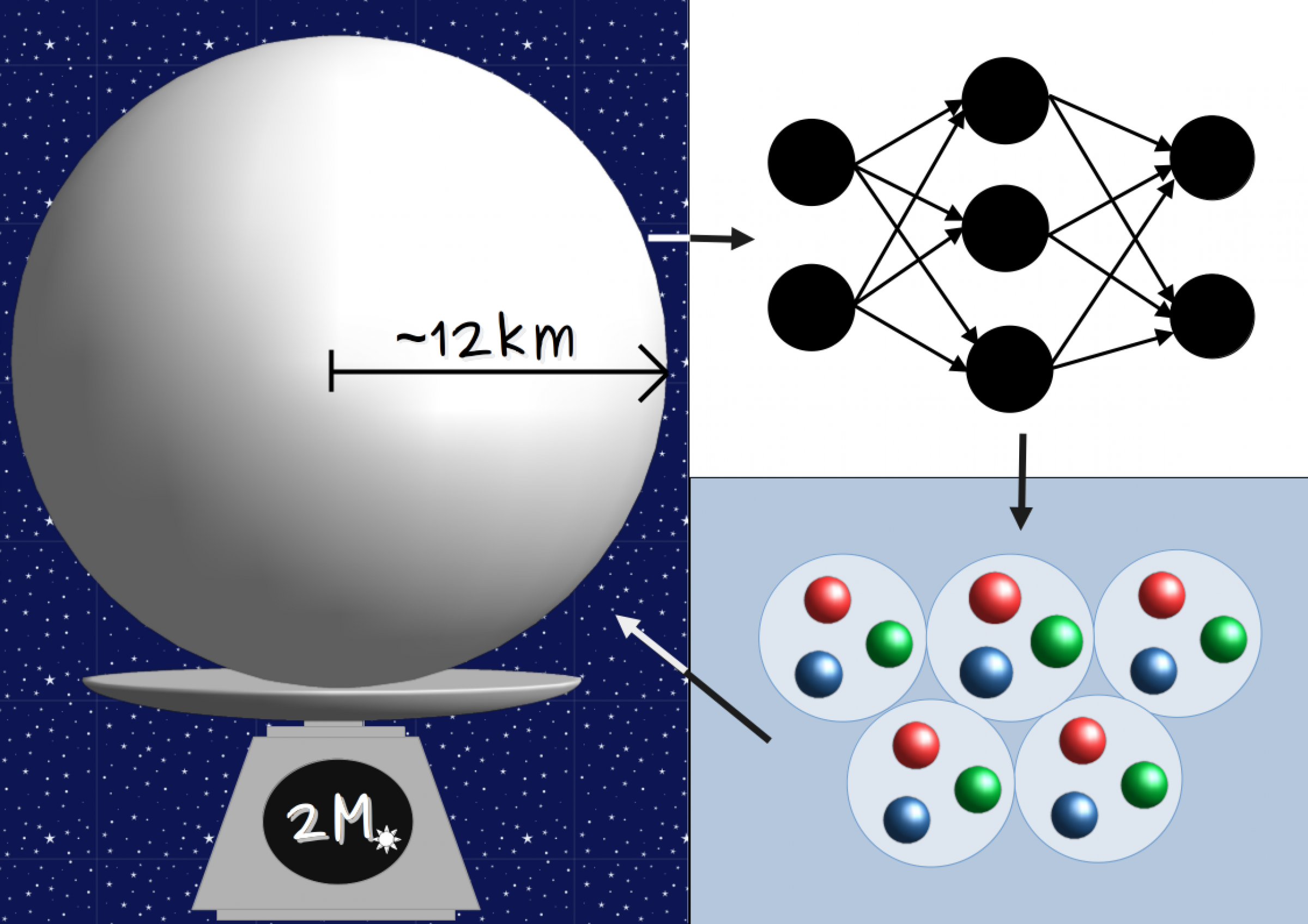October 7, 2022
Extremely dense mass - a look into the interior of neutron stars
Exploring the properties of dense matter by deep learning
Neutron stars are extremely dense inside: They reach masses comparable to twice that of the sun - having a size equivalent to the city of Frankfurt (10-14 km radius). Therefore, these compact objects serve as unique laboratories for studying the properties of dense matter. A research group at the Frankfurt Institute for Advanced Studies (FIAS) now deployed deep learning techniques to add further constraints on the stars’ interiors.
If the internal pressure of matter at a certain density - the equation of state - is given, there is a clear relationship between the mass and the radius of a neutron star. Therefore, it is inversely possible to derive the unknown equation of state from the mass-radius observations of neutron stars.
The FIAS team developed a deep-learning algorithm that uses neutron star observational data to reconstruct the underlying equation of state. This allows for a versatile characterisation of the equation of state, as neural networks are capable of capturing complex nonlinear correlations in data. While conventional approaches to reconstructing the equation of state in the past involved a certain algorithm (the Bayesian inference), more recent attempts use supervised machine learning inference.
In this paper, however, the group introduces a novel physics-based deep learning approach. It consists of an unsupervised, autonomous learning algorithm in the context of automatic differentiation. The proposed method has been tested on mock data and is superior to previous algorithms in terms of computational efficiency [1]. With this newly developed algorithm, the team reconstructs the equation of state of neutron stars from the limited data available so far [2]. "This helps us to understand how matter behaves at extremely high densities", explains first author Shriya Soma (26), a PhD student at FIAS. "We get an idea of this strong interaction, one of the fundamental forces in physics."
The modern NASA telescope NICER (Neutron Star Interior Composition ExploreR) on the International Space Station helps on the current mission to reduce the large uncertainties in measuring radii in the future. Additional data from next-generation telescopes and gravitational wave detectors offer the possibility of an accurate reconstruction of the equation of state and thus our understanding of the behaviour of matter at extreme densities. Until then, calculations such as those in the papers by Shriya Soma et al. may provide a suitable approximation.
Publications:
1 - Shriya Soma, Lingxiao Wang, Shuzhe Shi, Horst Stöcker, Kai Zhou, Neural network reconstruction of the dense matter equation of state from neutron star observables, Journal of Cosmology and Astroparticle Physics, Volume 2022, August 2022, IOP Publishing Ltd and Sissa Medialab, https://doi.org/10.1088/1475-7516/2022/08/071
2 - Shriya Soma, Lingxiao Wang, Shuzhe Shi, Horst Stöcker, Kai Zhou, Reconstructing the neutron star equation of state from observational data via automatic differentiation, arXiv:2209.08883 [astro-ph.HE], September 2022, https://doi.org/10.48550/arXiv.2209.08883
Image: Neutron stars encompass the densest form of matter: twice the mass of the sun in a spherical volume with a radius of a few kilometers (left). Using neural networks (top right), the group at FIAS developed an algorithm that uses the macroscopic properties of neutron stars (specifically, the masses and radii) to obtain the corresponding microscopic quantities, i. e. the underlying equation of state (bottom right).
